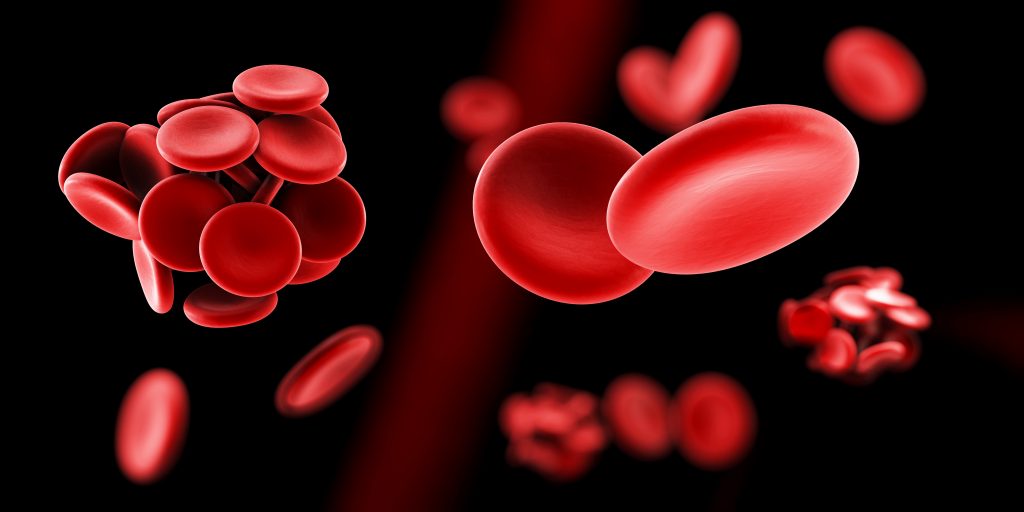-
Cancer
Direct oral anticoagulants significantly decrease recurrent venous thrombosis for adult cancer patients, Mayo Clinic study finds

ROCHESTER, Minn. — Direct oral anticoagulants should be considered the standard of care to treat adult patients with cancer-associated thrombosis, according to a new, ongoing study by Mayo Clinic researchers.
Thrombosis is a condition where blood clots form in blood vessels of the legs. These clots can travel to the lungs and become lodged in blood vessels, causing a pulmonary embolism. Thrombotic outcomes increase mortality in cancer patients and are the second most common cause of death after disease progression.
The study, published in Mayo Clinic Proceedings, examined the results of four randomized clinical trials involving 2,894 patients. This study found that direct oral anticoagulants significantly decreased cancer-associated venous thrombosis recurrence without significantly increasing bleeding, compared with parenteral dalteparin.
"Our meta-analysis finds that cancer patients who experience acute venous thrombosis events and were treated with direct oral anticoagulants experienced a 41% decrease in the rate of thrombosis recurrence compared with dalteparin, without significantly increasing major bleeding," says Irbaz Riaz, M.B.B.S., a Mayo Clinic hematologist and oncologist.
Dr. Riaz and Harry Fuentes Bayne, M.D., who is a Mayo Clinic medical oncologist, are co-first authors of the study.
Direct oral anticoagulants have been considered the standard of care to treat venous thrombosis in patients without cancer. "This analysis indicates the same is true for cancer patients," says Robert McBane II, M.D., a Mayo Clinic cardiologist and the study's senior author.
The systematic review led by Mayo Clinic, which also involved researchers from five other institutions, did not find differences in mortality based on the use of oral anticoagulants versus dalteparin. The authors recommend caution in using anticoagulants when treating patients at high risk of bleeding.
The researchers used a novel framework for a "living," interactive review of randomized controlled trials, beginning in September 2019. Results will be updated as more information becomes available.
"We have created interactive evidence summaries of multiple treatment options that present the benefits and harms, and evidence certainty for outcomes, and this evidence is updated as soon as new studies are published," says M. Hassan Murad, M.D., a Mayo Clinic clinical epidemiologist who leads Mayo Clinic's Evidence-Based Practice Research Program and is the study's corresponding author. "We will continue to add randomized controlled trials to this 'living' research, leading to more discoveries that produce improved outcomes for patients."
This approach was developed by a Mayo Clinic team consisting of Drs. Murad and Riaz, as well as Mayo Clinic artificial intelligence experts Huan He, Ph.D., and Hongfang Liu, Ph.D.
Dr. McBane received research funding from Bristol Myers Squibb Co. related to one of the four clinical trials reviewed. All other authors report no competing interests.
###
About Mayo Clinic Proceedings
Mayo Clinic Proceedings is a monthly peer-reviewed journal that publishes original articles and reviews on clinical and laboratory medicine, clinical research, basic science research, and clinical epidemiology. The journal, sponsored by Mayo Foundation for Medical Education and Research as part of its commitment to physician education, has been published for 95 years and has a circulation of 127,000.
About Mayo Clinic
Mayo Clinic is a nonprofit organization committed to innovation in clinical practice, education and research, and providing compassion, expertise and answers to everyone who needs healing. Visit the Mayo Clinic News Network for additional Mayo Clinic news. For information on COVID-19, including Mayo Clinic's Coronavirus Map tracking tool, which has 14-day forecasting on COVID-19 trends, visit the Mayo Clinic COVID-19 Resource Center.
Media contact:
- Joe Dangor, Mayo Clinic Public Affairs, newsbureau@mayo.edu







